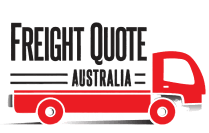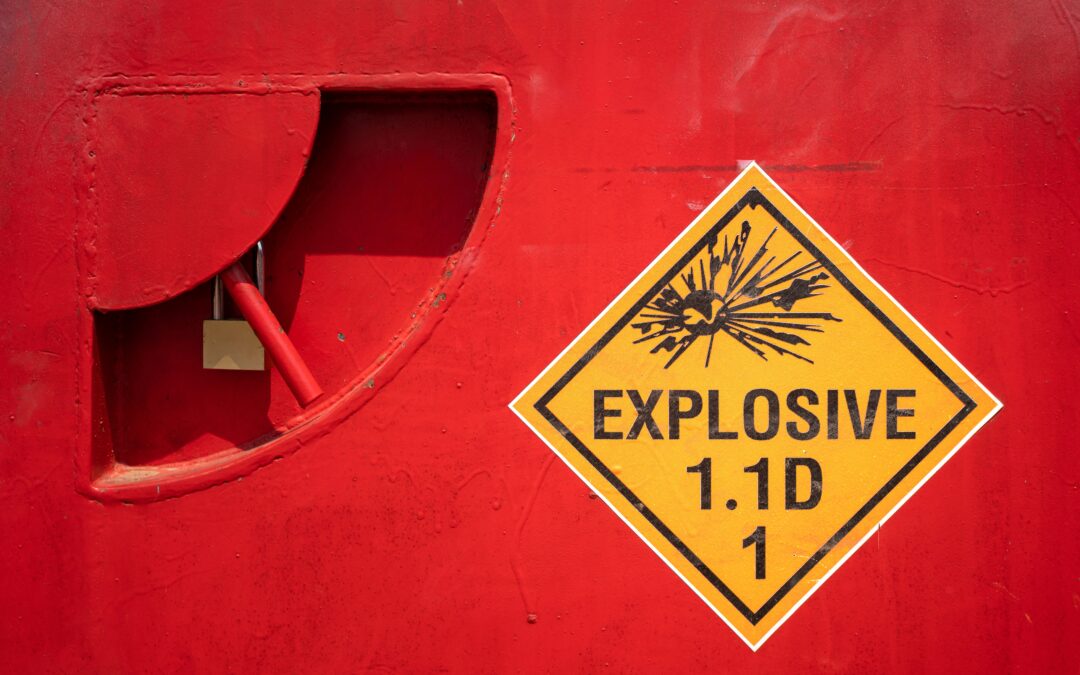Transporting explosives by road is a highly regulated and risky activity that requires strict compliance to prevent accidents, protect human lives and the environment. In Australia, the transportation of explosives is governed by several laws and regulations that set out the safety standards and procedures to be followed by transport operators. By following these laws and regulations, the risk of harm to both people and the environment is significantly reduced.
What Are Explosives?
Explosives (classified as Class 1 dangerous goods) are substances or materials that have the potential to rapidly release energy in the form of an explosion. They undergo a rapid chemical reaction that results in the sudden generation of heat, gas, and pressure, causing a powerful and potentially destructive release of energy. Explosives can exist in various forms, including solid, liquid, or gas, and they are designed or manufactured with the purpose of being used for industrial, military, or recreational applications.
Some common examples of explosives include:
- TNT (Trinitrotoluene)
- Dynamite
- Gunpowder
- C-4
- Nitro-glycerine
- Ammonium Nitrate
- PETN (Pentaerythritol tetranitrate)
- Semtex
Explosives encompass a wide range of materials varying in their hazardous nature. From highly volatile substances like TNT to traditional explosive compounds such as gunpowder and gelignite, the potential risks associated with these materials are significant. Understanding the risks and properties of the explosives being transported is crucial.
Regulatory Frameworks and Safety Requirements for Transporting Explosives
Safety requirements typically vary depending on the industry or activity, but generally involve following specific protocols and procedures which aim to prevent accidents, injuries, or damage.
The ADG Code
The Australian Dangerous Goods Code (ADG Code) is the primary regulatory framework for the transportation of dangerous goods freight in Australia. The ADG Code sets out the classification, packing, marking, labelling, and documentation requirements for explosives, as well as the rules for loading, unloading, and transportation. In order to transport explosives by road, a transport operator must hold a dangerous goods driver’s license and have a vehicle that meets the safety standards set out in the ADG Code. The vehicle must be fitted with safety equipment such as fire extinguishers, warning signs, and emergency response kits.
The ADG Code also requires that the transport operator develops a safety management plan that outlines the procedures for transporting explosives, including the emergency response plan in case of an accident. The safety management plan must be regularly reviewed and updated to ensure compliance with current safety standards. Furthermore, the transport operator must ensure that the personnel involved in the transportation of explosives are trained and competent to handle the dangerous goods safely. They must be familiar with the safety requirements, emergency procedures, and risk management strategies.
The Explosives Code
Another Code in Australia regarding the transportation of explosives is the Australian Code for the Transport of Explosives by Road and Rail (known as the Explosives Code). This code sets out the regulatory framework and guidelines for the safe transport of explosives by road and rail across Australia. It establishes requirements for classification, packaging, labelling, placarding, and documentation of explosives during transportation. The Explosives Code is implemented under the authority of the federal Department of Infrastructure, Transport, Regional Development, and Communications and is applicable across all states and territories in Australia. It aims to ensure the safe handling and transportation of explosives to prevent accidents, protect human lives, and minimize environmental impact.
The Work Health and Safety Act
The Work Health and Safety Act places a duty of care on employers to ensure the health and safety of their workers and others affected by their work. It requires that employers conduct risk assessments and implement appropriate control measures to eliminate or minimise risks associated with such high-risk work. This includes ensuring that explosives are stored and transported in a secure manner and that appropriate emergency plans are in place in case of an incident.
In addition to federal legislation, each state and territory has its own regulations and guidelines. These regulations differ slightly but generally follow the principles outlined in the ADG Code and other federal legislation. For example, if you are transporting explosives in New South Wales, you should ensure you are following the laws outlined in Explosives Regulation 2013 (amongst others) and if you’re transporting explosives in South Australia, it is worth being familiar with the Explosives Regulations 2011.
Perth Truck Explosion
An example of just how risky transporting explosives can be occured in 2022 at Cosmo Newbury, about 1,000 kilometres east of Perth. The driver of a truck pulling a trailer loaded with ammonium nitrate emulsion (frequently used for blasting at mine sites) was lucky to walk away with his life after the burning trailer exploded. The driver was notified, just in time, that one of the truck wheels had caught fire, allowing him to unhitch the trailer and move the truck a safe distance away before the explosion created a large 1.5 metre deep ‘crater-like’ hole in the road.

The explosion released masses of smoke into the air while the burning wreckage was scattered into the surrounding bushland, starting several small spot fires. If it had not been for another truck alerting the driver of the danger, the accident could have been fatal. The next step was to investigate the cause of the accident and minimise the risk of it happening again in the future. This incident was a timely reminder of the inherent risks associated with transporting explosives and the importance of safety protocols.
Need to Transport Class 1 Dangerous Goods in Australia?
There are strict limitations and guidelines to what, and how much of a dangerous material can be transported by a carrier, so be sure to declare the Dangerous Goods when requesting a quote online. Freight Quote Australia is able to arrange dangerous goods transport of most Dangerous Goods, however, we will require the UN number, Class, Packing Group, and Weight of the goods in order to quote and book your freight.
This information is general in nature and we accept no responsibility for consequences arising from the use or reliance on this article. If you need assistance transporting explosives, please feel free to submit a Quote Request.

